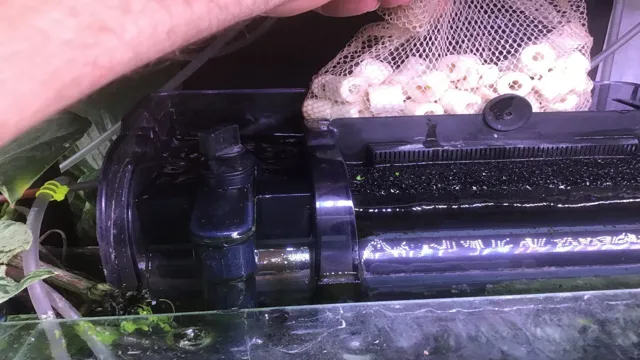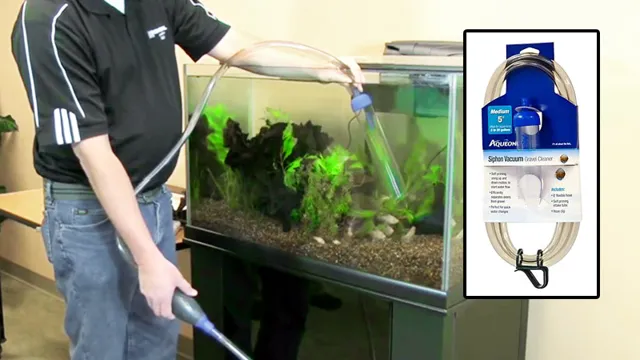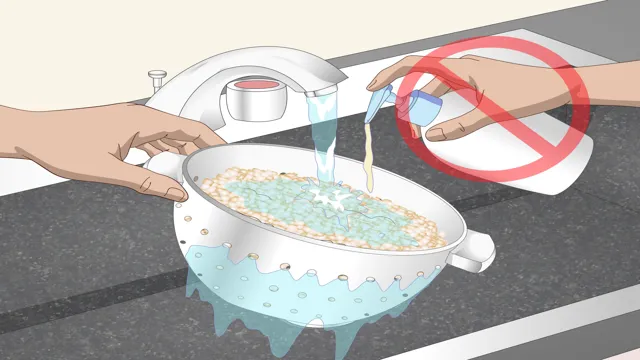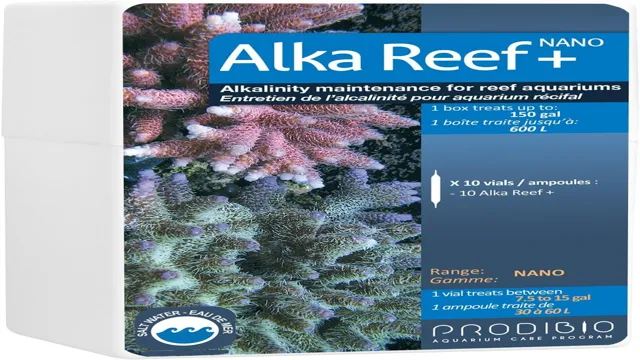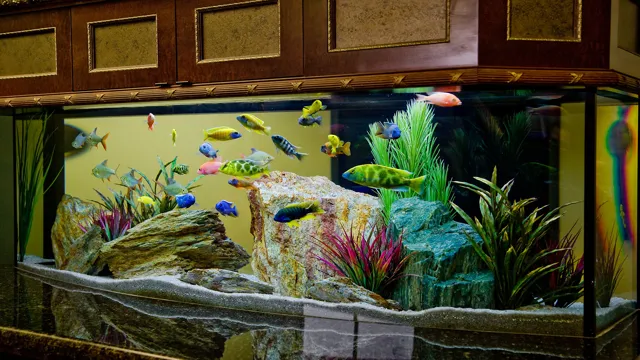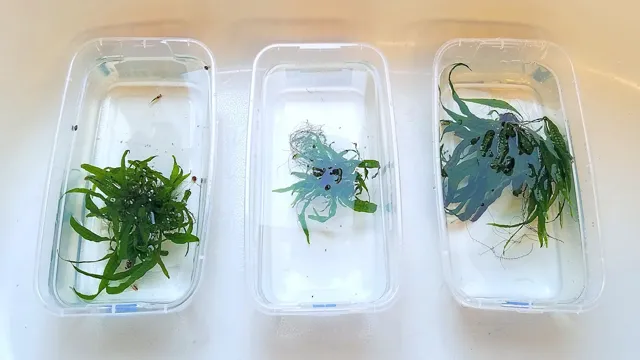If you’re a proud aquarium owner, one of the most crucial aspects of maintaining a healthy and thriving aquatic environment is changing the filter sponge in your tank. A filter sponge is a vital part of the aquarium filtration system, as it removes impurities and debris from the water, ensuring that your fish, plants, and other aquatic creatures stay healthy and happy. However, changing your filter sponge can be a daunting task, especially if you’re new to the aquarium hobby.
In this blog post, we’ll take a closer look at why you need to change your filter sponge and provide you with some essential tips on how to do it effectively. So, if you’re ready to learn more about keeping your aquarium clean and healthy, let’s dive in!
Gather Supplies
To change the aquarium filter sponge, you first need to gather all the necessary supplies. You’ll need a clean bucket, some fresh filter media, and of course, a new sponge. Make sure you choose a sponge that works well with your specific filter system.
Some filters require a certain type of sponge, so double-check your product manual before making your purchase. When selecting your new sponge, also consider the level of filtration you need for your aquarium. A higher filtration level is better for larger tanks or for aquariums with a lot of fish.
Finally, once you’ve got everything you need, make sure to clean your hands before handling any of the new supplies to keep your aquarium healthy and free of contaminants. Remember, keeping your aquarium clean and well-maintained is crucial for the health and happiness of your fish!
Materials Needed
When it comes to starting a new project, gathering supplies is essential. Not having the right materials on hand can quickly become frustrating and prevent progress. Therefore, it’s important to determine exactly what you’ll need ahead of time.
Depending on the project, materials needed might include things like paints, brushes, fabric, scissors, glue, and more. If you’re unsure what supplies to gather, don’t hesitate to do some research beforehand. For example, if you’re starting a woodworking project, research the necessary tools and supplies for that specific project.
This will save you time and money in the long run and increase the likelihood of a successful outcome. So take the time to gather everything you’ll need before starting your next project, and you’ll be off to a great start.

Ensure a Clean Environment
When it comes to ensuring a clean environment, gathering supplies is the essential first step. Look around your environment, and evaluate the cleaning supplies you will need. If you are cleaning a kitchen, you will need sponges, antibacterial cleaner, and paper towels.
For cleaning floors, you might need a mop, a broom, and a dustpan. Ensure you have a quality vacuum cleaner or a dustbuster for removing dirt and debris from carpets, sofas, and other surfaces. Cleaning gloves are also a key item to have on hand.
If you are using harsh chemicals, you should protect your skin. Finally, do not forget to restock on trash bags. When it comes to maintaining and cleaning your environment, it is better to be over-prepared than under-prepared.
Remember, by using quality supplies and tools, you can have positive results, while keeping your environment safe and clean for everyone.
Removing the Old Sponge
If you want to keep your aquarium clean and healthy, it’s important to change the filter sponge regularly. The first step is to remove the old sponge from the filter. Simply turn off the filter and unplug it from the power source.
Then, remove the sponge from the filter box or cartridge. Depending on your filter type, it may be held in place by clips or screws, so be gentle when handling it to avoid damaging the filter. You may also need to remove any additional media, such as pads or bio-filters, that may be stacked on top of the sponge.
Discard the old sponge and replace it with a new one. Remember, the frequency with which you need to replace the sponge will depend on the amount of fish you have in your aquarium, the size of the filter, and the type of filter media you use. As a general rule, it’s a good idea to check your filter weekly and replace the sponge at least once a month. (See Also: How to Apply Vinyl Aquarium Background: Step-by-Step Guide for Beginners)
By doing so, you’ll ensure that your aquarium remains clean and healthy for your fish!
Turn Off the Filter System
Turning off the filter system is an important step for cleaning your aquarium’s sponge filter. Before getting started, make sure to unplug the filter and remove it from the tank. Once you have done that, take out the old sponge and dispose of it.
It is important to remove it carefully, as this will prevent any leftover debris or waste from being released into the water. Be sure to rinse your hands thoroughly after handling the old sponge to avoid any contamination. Once the old sponge is removed, it’s time to insert a new one.
This can be done by simply sliding the new sponge onto the filtration tube. Make sure it fits securely and snugly to prevent any water from bypassing the sponge. After placing the new sponge, you can turn the filter back on and let it run for a few minutes to ensure that it is working correctly.
With this simple step, you can ensure that your aquarium stays clean and healthy for your aquatic friends.
Take Out the Sponge
If you’re looking to replace the sponge in your kitchen sink, the first step is to remove the old one. This might seem like a simple task, but it can actually be a bit tricky if the sponge has been in place for a while. To start, make sure your sink is completely empty so you have plenty of room to work.
Take a look at the sponge and see how it’s held in place. Most likely, it’s secured with a small metal clip or a plastic holder. Try to gently remove this clip or holder using your fingers or a pair of pliers if necessary.
Once the clip or holder is removed, you can simply pull the old sponge out of the sink. Be careful not to let any debris from the old sponge fall into the sink or down the drain as you remove it. With the old sponge out of the way, you’re ready to move on to installing the new one and enjoy a fresh, clean sink.
Cleaning the Filter
If you’re new to owning an aquarium, knowing how to change the filter sponge can be confusing. However, keeping the filter clean is essential to maintain a healthy environment for your fish. The first step is to turn off the power supply to prevent electrical accidents.
Depending on your filter type, you need to remove the filter’s top cover and pull out the sponge. If the sponge is dirty, rinse it with tap water rather than soap or detergent. Cleaning the sponge with soap can leave behind residues that will harm the fish.
You should change the sponge every three to four months, depending on your aquarium’s size and the filter’s capacity. However, before putting in a new sponge, make sure to soak it first in the aquarium water for a few minutes. This ensures that the sponge doesn’t release air bubbles into the aquarium that can harm or stress your fish.
Keeping an aquarium clean is more than just physical maintenance; it’s an essential aspect of providing a healthy environment for your aquatic pets.
Rinse the Sponge Thoroughly
When it comes to maintaining your filter, cleaning the sponge is an important task that cannot be overlooked. After all, the sponge is responsible for trapping debris and keeping your aquarium clean, so it’s essential that you clean it properly. To begin, remove the sponge from the filter and rinse it thoroughly in cool, running water.
Be sure to squeeze it gently to remove any stubborn particles that may be stuck in the sponge. You can also use a small brush to loosen any debris that may be stuck in the sponge’s crevices. Once you’ve rinsed the sponge well, it’s time to put it back into the filter. (See Also: How to Get Natural Bacteria in Aquariums: The Ultimate Guide for a Healthy Ecosystem)
It’s best to do this after a water change, as the clean water will help flush out any lingering debris or contaminants in the sponge. Remember, a clean sponge ensures that your filter operates at optimal efficiency, which is essential for maintaining a healthy and thriving aquarium.
Inspect the Filter for Damage
Cleaning the air filter in your HVAC system is essential for maintaining its efficiency and extending its lifespan. Before cleaning the filter, it’s essential to inspect it for any damage. A damaged filter won’t perform efficiently, and it’s recommended to replace it.
Some common types of damage to look for include tears, cracks, or significant holes. Additionally, if the filter is clogged beyond normal operation, replacing it is also necessary. If the filter appears to be in good condition, you can proceed with cleaning it.
Regularly checking and replacing your filter is critical for maintaining optimal air quality, reducing energy costs, and preventing expensive system breakdowns. Taking care of your HVAC system is vital for ensuring your home remains comfortable and healthy, and inspecting the filter for damage is a crucial first step.
Installing the New Sponge
If you’re looking to change the sponge in your aquarium filter, it’s important to know how to do it properly to avoid any mishaps. First, turn off the filter and unplug it from the electrical outlet. Carefully remove the old sponge and discard it.
Next, rinse the new sponge in clean, fresh water to remove any debris or dust. Insert the new sponge back into the filter, making sure that it fits snugly and securely. Turn the filter back on and monitor it closely to ensure it’s working correctly.
Remember to check and change the sponge regularly to keep your aquarium clean and healthy. By following these simple steps, you can successfully change your aquarium filter sponge and keep your fish happy and healthy.
Choose the Correct Sponge
When it comes to dishwashing, one essential tool is a good sponge. But how do you choose the correct sponge for your dishes? The first thing you need to consider is the type of surface you will be cleaning. If you have delicate or non-stick surfaces, a soft sponge made of foam or microfiber would be ideal to avoid scratching.
On the other hand, if you have tougher surfaces or stubborn stains, you may need a tougher sponge made of nylon or stainless steel. Once you have chosen the right sponge, it’s time to install it in your dishwashing routine. Simply wet the sponge and add your preferred dishwashing soap.
Apply it to the dishes using a circular motion, being sure to get into tiny crevices and hard-to-reach areas. Rinse the dishes thoroughly and voila! Your dishes are clean and ready to use. Remember, a good sponge is essential for effective dishwashing, and choosing the right one will help ensure long-lasting, scratch-free dishes.
Insert the New Sponge
When it’s time to replace your sponge, it’s important to install the new one correctly to ensure maximum cleanliness and efficiency while washing dishes. To insert the new sponge, start by removing the old one and cleaning the area around it. Then, wet the new sponge with warm water to help soften it and make it more pliable.
Next, gently squeeze the sponge to remove any excess water, allowing it to fit snugly into its holder. Make sure the sponge is securely in place, with no gaps or loose areas. A well-fitted sponge will provide better cleaning power and help prevent bacteria buildup.
By following these simple steps, you can easily install your new sponge and ensure a hygienic washing experience every time. (See Also: How to Build a House with an Aquarium in Minecraft: Tips and Tricks)
Restart the Filter System
If you’re wondering how to change the sponge on your aquarium filter, don’t worry, it’s a pretty straightforward process. Changing your filter sponge is important to maintain a healthy and clean environment for your fish to live in. First things first, make sure you turn off the filter system and unplug it from the power source.
Then, remove the old filter sponge and dispose of it properly. Next, rinse the new sponge in cool water to remove any dust or debris. Carefully insert the new sponge into the filter, making sure it fits snugly.
Once it’s in place, plug the filter back in and turn it on. It’s important to let the fresh filter sponge run for a few hours to ensure it’s properly filtering the water before adding any fish back into the tank. Remember to replace the sponge every few months to keep the aquarium in top condition.
Conclusion
In summary, changing your aquarium filter sponge shouldn’t feel like rocket science. It’s a simple and easy task that can greatly benefit the health and wellbeing of your aquatic pets. So, remember to change your sponge regularly, rinse it out properly, and don’t forget to name your fish! Happy fishkeeping!”
FAQs
How often should I change my aquarium filter sponge?
It is recommended to replace your aquarium filter sponge every 4-6 weeks to ensure proper filtration.
What signs should I look for to know it’s time to change my aquarium filter sponge?
You may notice reduced water flow from your filter or an increase in debris and waste buildup in your aquarium when it’s time to change your filter sponge.
Can I clean my aquarium filter sponge instead of replacing it?
It is not recommended to clean your aquarium filter sponge as it can harm beneficial bacteria colonies that develop in the sponge.
What is the best type of filter sponge for my aquarium?
The best type of filter sponge for your aquarium depends on the type of filter and the needs of your aquarium inhabitants. Be sure to match the sponge to the appropriate filter model.
How do I properly dispose of my old aquarium filter sponge?
Old aquarium filter sponges should be disposed of in your regular household trash. Be sure to rinse them thoroughly before disposal.
Can I reuse my old aquarium filter sponge?
It is not recommended to reuse old aquarium filter sponges as they may contain harmful bacteria and debris that can negatively impact your aquarium environment.
How do I know if my aquarium filter sponge is working properly?
A properly functioning aquarium filter sponge will allow for proper water flow and filtration, resulting in a clear and healthy aquarium environment.

